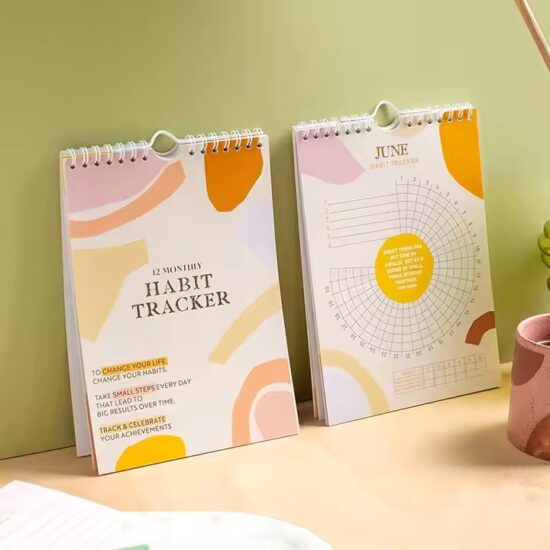bob@nbdho.com
Demand Analysis of Planner Calendars Across Various Industries
Demand Analysis of Planner Calendars Across Various Industries
Planner calendars, once considered simple time-management tools, have evolved into essential productivity instruments across a wide array of industries. With growing interest in organization, goal-setting, and personalized planning solutions, demand for planner calendars is surging—not only among individuals but also within corporate and institutional environments.
Here’s a breakdown of how various industries are leveraging planner calendars and what’s driving demand in each sector.
1. Corporate & Business Sector
Use Cases: Employee productivity, team goal alignment, meeting scheduling, corporate gifts.
Demand Drivers:
-
Growing focus on time management and goal tracking.
-
Branding opportunities through custom planner designs.
-
Need for non-digital planning tools during focused work or travel.
Trend: Many companies now provide branded planners to employees as onboarding gifts or use them in leadership programs to promote planning habits.
2. Education Sector
Use Cases: Academic calendars, student planners, teacher lesson planners.
Demand Drivers:
-
Helping students and teachers manage assignments, exams, and term schedules.
-
Integration of learning strategies with planning tools (e.g., weekly study trackers, habit logs).
-
Preference for physical planners among students to avoid screen fatigue.
Trend: Schools and universities often customize planners with school branding and motivational content for student use.
3. Healthcare & Medical Sector
Use Cases: Appointment scheduling, patient logs, shift planning, wellness tracking.
Demand Drivers:
-
Need for clear, reliable, offline planning tools.
-
Emphasis on mental health and stress management through wellness planners.
-
Use by therapists and coaches for client progress tracking.
Trend: Healthcare professionals increasingly use planner calendars to structure their day and reduce burnout.
4. Retail & E-commerce Industry
Use Cases: Promotional giveaways, seasonal sales planning, inventory and order tracking.
Demand Drivers:
-
Cost-effective marketing tool that offers year-round visibility.
-
Encourages customer retention and brand recall.
-
Often bundled with other promotional merchandise.
Trend: Customized planner calendars are widely used as part of loyalty or subscription packages.
5. Creative & Freelance Professions
Use Cases: Project planning, deadline tracking, brainstorming pages.
Demand Drivers:
-
Need for flexible, visually appealing planning systems.
-
Desire for undistracted focus and idea capture.
-
Preference for artistic or inspirational planner layouts.
Trend: Artists, designers, and freelancers often choose niche or aesthetic planners that suit their unique workflow.
6. Government & Nonprofits
Use Cases: Event planning, grant tracking, community engagement initiatives.
Demand Drivers:
-
Transparent scheduling and accountability.
-
Budget-friendly, practical tools for staff and volunteers.
-
Support for paper-based systems in administrative workflows.
Trend: Many NGOs and public agencies rely on planner calendars for internal operations and outreach coordination.
7. Fitness & Wellness Industry
Use Cases: Workout schedules, nutrition tracking, goal journals.
Demand Drivers:
-
Rising consumer interest in holistic health and lifestyle planning.
-
Integration of fitness goals with mental wellness routines.
-
Strong demand for guided planners (e.g., 12-week transformation journals).
Trend: Personal trainers, yoga instructors, and wellness brands often distribute branded planners to clients.
Conclusion
The demand for planner calendars is no longer limited to personal use—it’s industry-wide. From healthcare to education, from retail to corporate boardrooms, planner calendars have become a multifunctional tool that enhances productivity, branding, and strategic planning. For manufacturers, wholesalers, and customization providers, understanding these industry-specific needs opens the door to targeted solutions and long-term client relationships.

